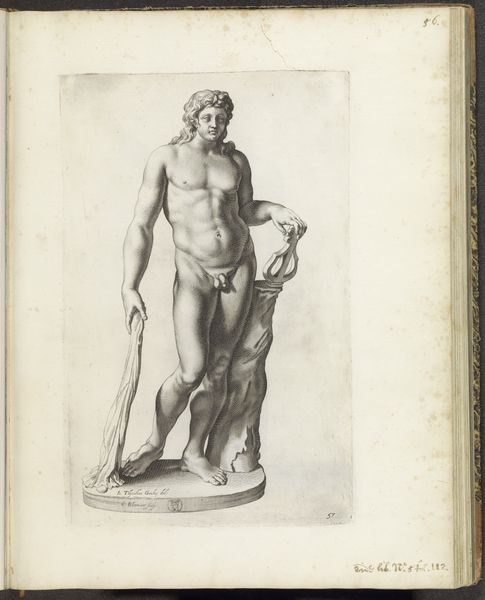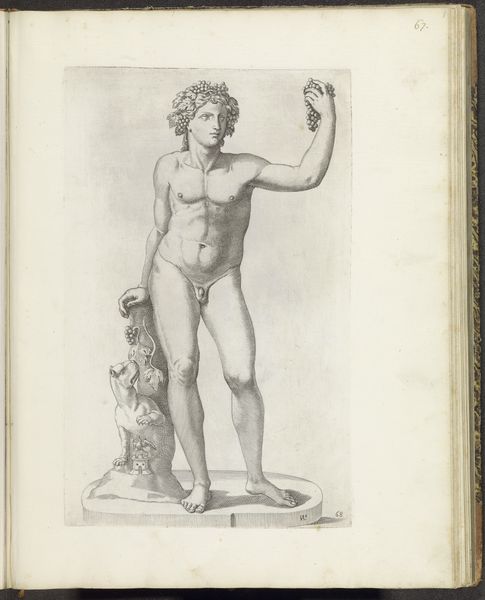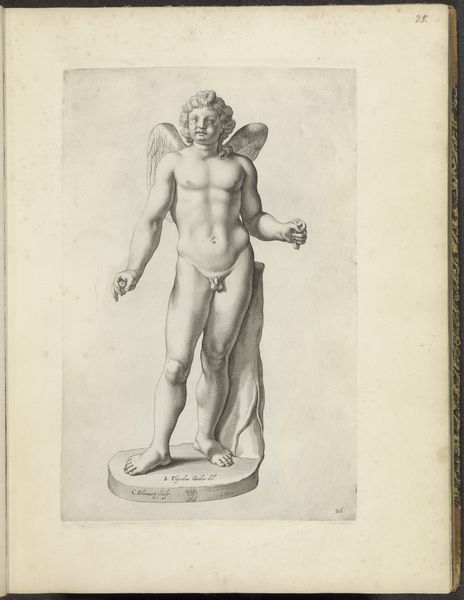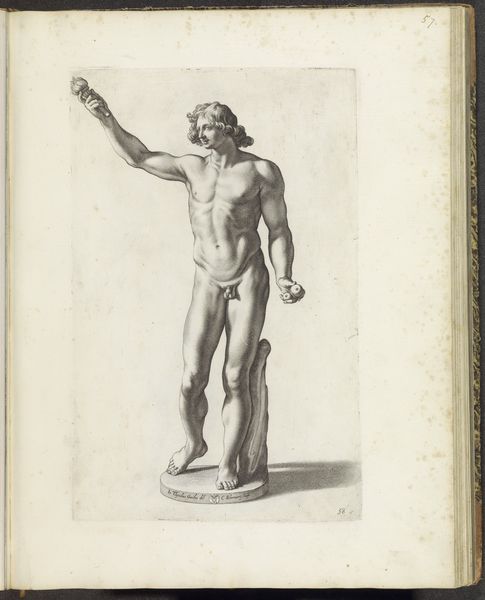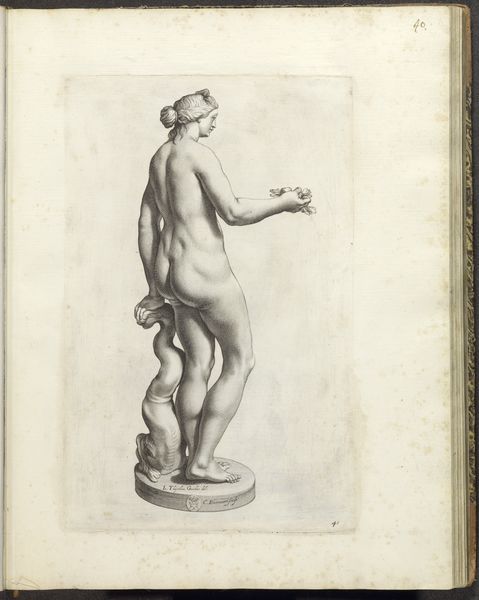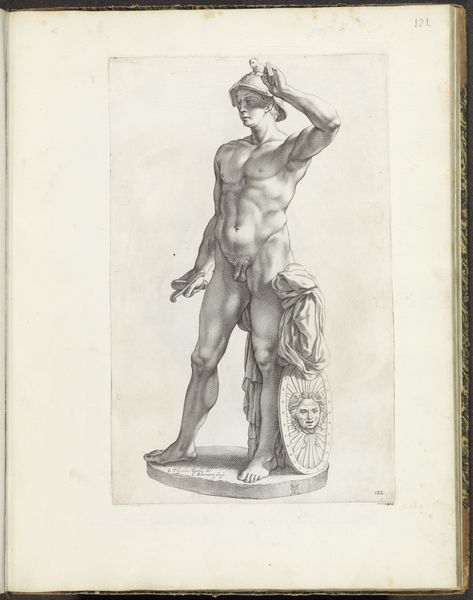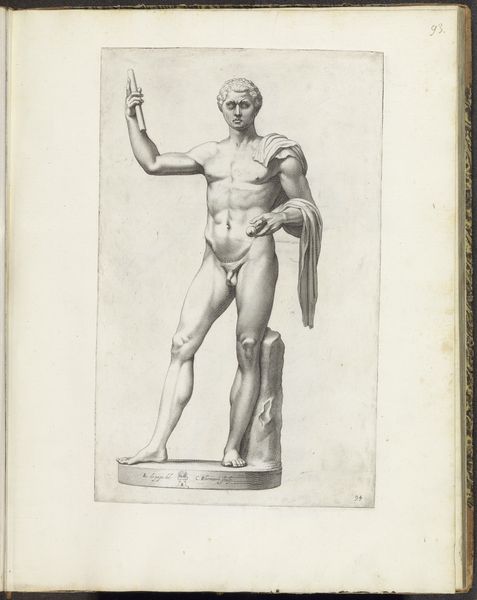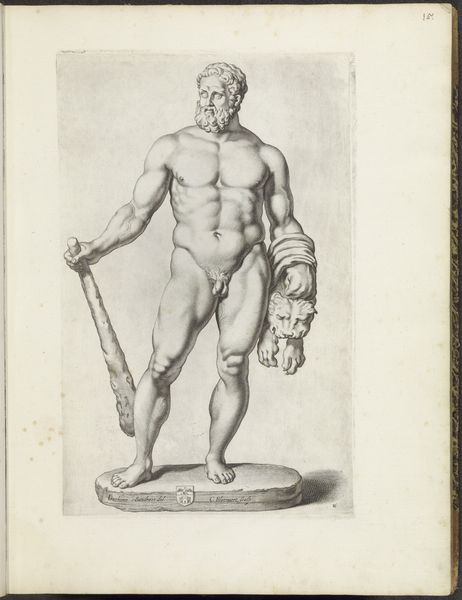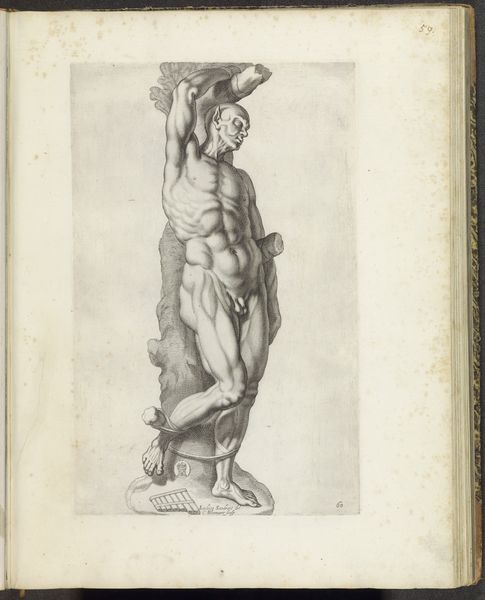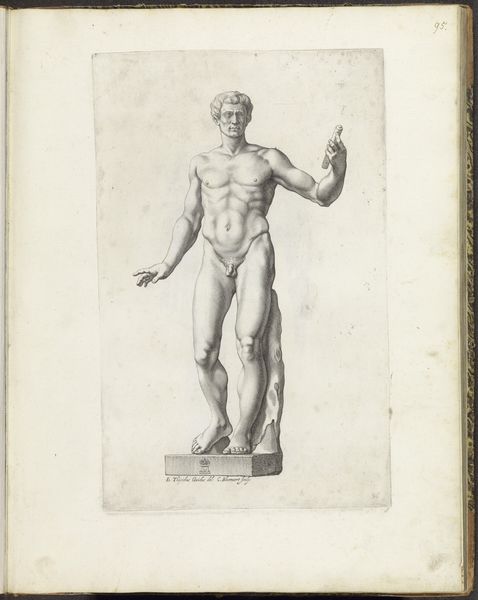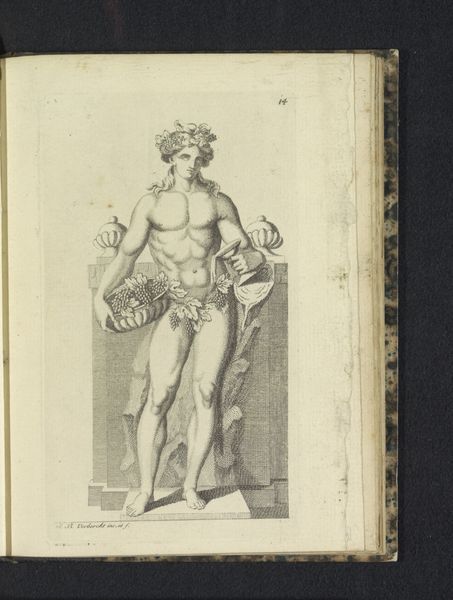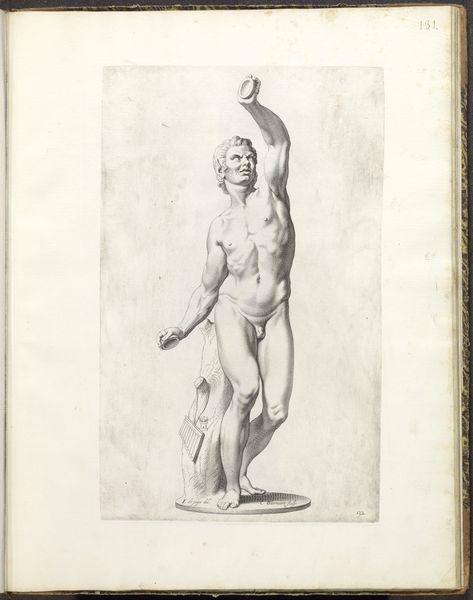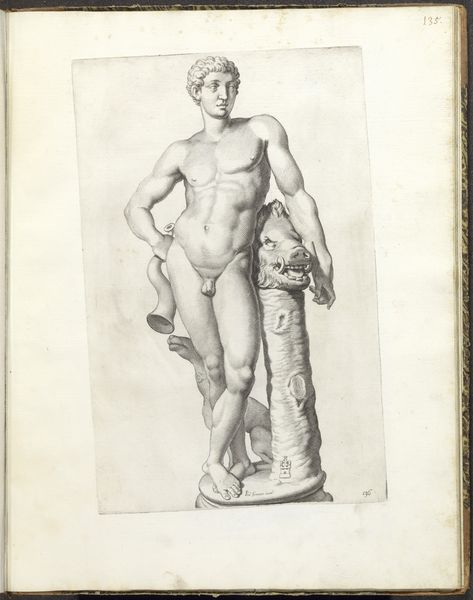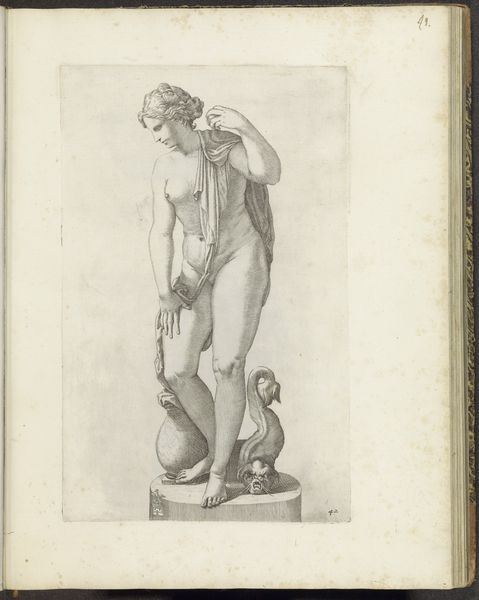
print, engraving
#
baroque
# print
#
pencil sketch
#
figuration
#
history-painting
#
nude
#
engraving
Dimensions: height 371 mm, width 235 mm
Copyright: Rijks Museum: Open Domain
Theodor Matham created this print, "Statue of Apollo with the skin of Marsyas," sometime in the 17th century. Matham, working in the Netherlands, chose to depict a mythological scene. Apollo, the god of music and order, stands triumphant, holding the flayed skin of Marsyas, a satyr who dared to challenge his musical skills. In 17th-century Dutch culture, steeped in both classical learning and moralizing Protestantism, this image speaks volumes. It reflects the period's fascination with the classical world. But it also serves as a cautionary tale. Marsyas's hubris, his challenge to divine authority, resulted in gruesome punishment. The print underscores the importance of respecting social hierarchies and the established order. Artists like Matham, supported by wealthy patrons and the art market, reinforced social norms through their work. To truly understand this image, we can delve into the history of Dutch printmaking, explore the role of classical mythology in Dutch art, and examine the social and religious values of the time. Art provides a window into the complex world of the past, where beauty and power were often intertwined.
Comments
No comments
Be the first to comment and join the conversation on the ultimate creative platform.
